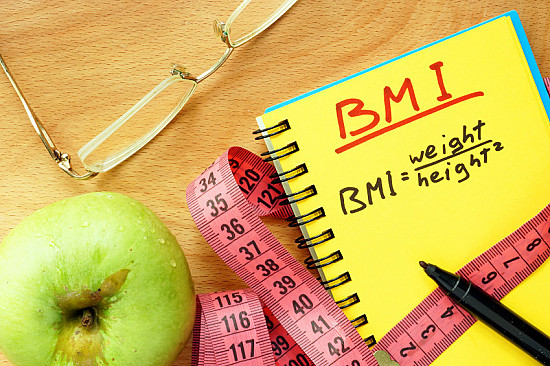1. Introduction to Body Mass Index (BMI)
What is BMI?
Body Mass Index (BMI) is a widely used measure to assess whether an individual has a healthy body weight relative to their height. Calculated by dividing a person’s weight in kilograms by the square of their height in meters (kg/m²), BMI serves as a general guideline to categorize individuals into weight categories: underweight, normal weight, overweight, and obese.
Why BMI Matters
While Body Mass Index does not directly measure body fat, it provides a simple and accessible indicator for assessing potential health risks, helping both individuals and health professionals identify weight-related health concerns.

2. The Importance of BMI in Health Assessments
Simplicity and Accessibility
One of the primary benefits of Body Mass Index is its ease of use. Anyone can calculate their BMI with basic measurements, which makes it accessible for self-monitoring. This simplicity is key in promoting health awareness, as individuals can easily track where they fall on the BMI scale.
Correlation with Health Risks
Numerous studies have shown a correlation between high BMI and an increased risk of health conditions, such as heart disease, diabetes, and hypertension. These associations make BMI a useful preliminary tool for identifying potential health risks.
Standardization in Public Health
BMI provides a standardized language for health professionals, facilitating communication and consistency in public health guidelines, research, and policies. It remains a crucial component in tracking obesity rates and developing targeted interventions.
3. Limitations of BMI
Body Composition and Its Impact
BMI does not account for variations in muscle and fat composition. For example, an athlete and a sedentary individual may have the same BMI, but their body compositions differ significantly, potentially misclassifying their health status.
Ignoring Fat Distribution
Body Mass Index does not address where body fat is stored, which can be a critical factor in health. Abdominal fat, for instance, is more closely linked to cardiovascular risks than fat in other areas.
Cultural and Gender Considerations
BMI can misclassify individuals from different ethnic backgrounds or genders, as it does not consider genetic variations in body composition. This has led to a growing need for population-specific BMI standards.
Lifestyle Factors and Health
BMI alone does not capture lifestyle factors like diet and physical activity. An individual with a high BMI but healthy lifestyle habits may have lower health risks than someone with a normal BMI but poor habits.

4. Alternative Measures of Health
Body Fat Percentage
Measuring body fat percentage provides a clearer picture of health by differentiating between fat and lean body mass. Methods such as bioelectrical impedance and skinfold measurements are more effective than the Body Mass Index Calculator for assessing body composition.
Waist-to-Hip Ratio and Waist Circumference
Waist-to-hip ratio and waist circumference are other valuable measures, offering insights into fat distribution and associated health risks. High waist-to-hip ratios are linked to an increased risk of metabolic disorders.
Comprehensive Health Assessments
Health assessments that include blood tests, blood pressure checks, and other screenings provide a more complete view of health, moving beyond weight-based metrics.
Fitness and Activity Levels
Physical fitness is vital to health. Incorporating assessments of strength, flexibility, and endurance offers a more holistic view, reflecting the importance of maintaining an active lifestyle.
5. A Holistic Approach to Health
Emphasizing Nutrition Education
Understanding nutrition empowers individuals to make healthier food choices, impacting their weight and overall health positively. Prioritizing nutrient-rich foods over calorie counting can foster long-term health.
Promoting Regular Physical Activity
Engaging in regular physical activity helps maintain a healthy weight, supports cardiovascular health, and enhances mental well-being. Simple activities like walking, cycling, or swimming are excellent for keeping active.
Fostering Body Positivity and Acceptance
A healthy body image promotes mental wellness, reducing stress and fostering healthier lifestyle choices. Encouraging body positivity helps individuals focus on health rather than solely on appearance.
Importance of Regular Health Check-ups
Regular check-ups with healthcare professionals ensure early detection of health issues, making it easier to maintain overall well-being.
Body Mass Index Chart
| Category | BMI Range |
|---|---|
| Underweight | <18.5 |
| Normal Weight | 18.5 – 24.9 |
| Overweight | 25 – 29.9 |
| Obese | ≥30 |
Nutrient Intake Based on Height and Weight
While individual nutrient needs can vary, general recommendations based on average daily caloric intake are:
- Calories: Based on weight and activity level, daily caloric needs can range from 1,800 to 2,400 calories for women and 2,000 to 3,000 for men.
- Vitamins: Daily multivitamins can help, but aim to meet requirements with whole foods high in vitamins A, C, D, and the B-complex.
- Carbohydrates: Aim for 45-65% of daily caloric intake from carbohydrates, primarily from complex sources like vegetables, whole grains, and legumes.

6. Conclusion: Moving Beyond BMI
The Need for a Comprehensive Perspective
While BMI is a helpful tool, a multifaceted approach to health is essential. Taking into account body composition, physical activity, and lifestyle habits provides a fuller understanding of health.
Encouragement for Seeking Professional Guidance
Body Mass Index can be a useful self-assessment tool, but for a personalized health plan, consulting healthcare professionals is crucial for tailored advice and guidance.




It’s like you’re reading my thoughts! You seem so knowledgeable about this topic, almost like you’ve written the book on it. A few more visuals might enhance it even more. I’ll certainly be back!
Thanks for your feedback. We’ve tried our best to cover all the details about the topic.
A few things that left will be elaborated in our upcoming series of this Body Mass Index blog.
Pretty nice post. I just stumbled upon your weblog and wished to say that I have really enjoyed surfing around your blog posts. After all I’ll be subscribing to your feed and I hope you write again soon!
Thank you so much for your kind words! I’m really glad to hear that you’ve enjoyed exploring the blog. Your support means a lot, and I’m excited to have you as a subscriber! I’ll be sure to keep posting more content, so stay tuned for future updates. Feel free to reach out anytime if you have any questions or thoughts — I’d love to hear from you!